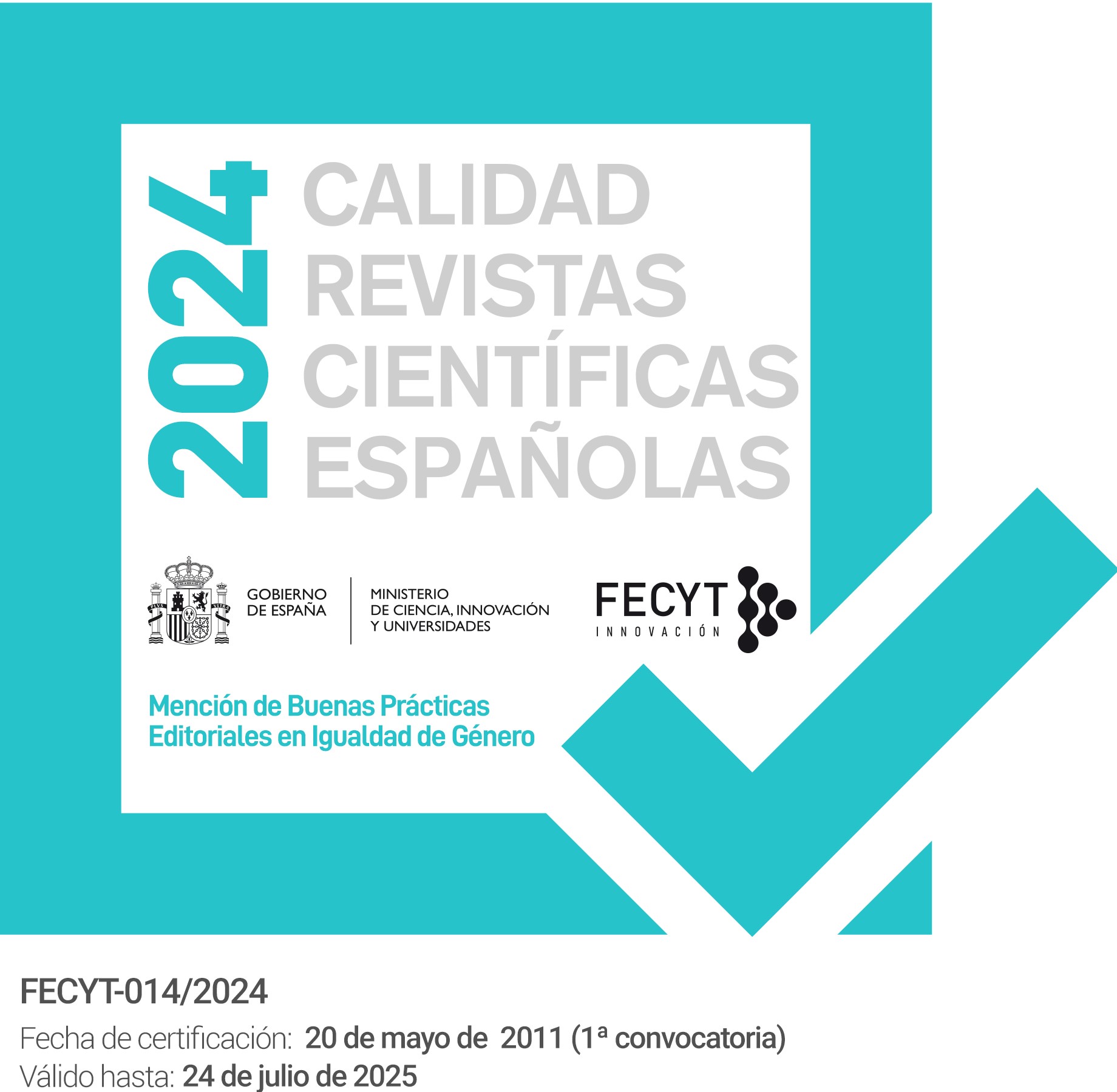Remesas y estratificación social en paraguay: dinámica de la recepción de remesas del sur y del norte
Palabras clave:
Remesas, Paraguay, Estratificación, Selectividad migratoriaResumen
Los históricos y nuevos procesos migratorios en Paraguay han implicado que en la actualidad se asista a un aumento en la intensidad de la recepción de remesas internacionales, despertando el interés por los efectos que provocarían en diversas facetas de la organización social. Este artículo se sitúa en ese nuevo escenario, el objetivo es analizar la importancia de las remesas internacionales en Paraguay y las características de los hogares receptores. Mediante el método análisis de componentes principales se construyen estratos sociales y se estudia la relación entre recepción de remesas internacionales y niveles socioeconómicos.
Los principales resultados obtenidos sugieren que la economía doméstica de los hogares está afectada fuertemente por las remesas y que existen particulares dinámicas de autoselección que conectan ciertos hogares receptores con espacios del Norte (España y Estados Unidos) y otros con espacios del Sur (Argentina y Brasil).
Descargas
Referencias
ACOSTA, P. (2011): «School Attendance, Child Labour, and Remittances from International Migration in El Salvador», Journal of Development Studiesvol. 47 (6), pp. 913-936.
ACOSTA, P.; CALDERÓN, C.; FAJNZYLBER, P., y LÓPEZ, H. (2006): «Remittances and Development in Latin America», The World Economy vol. 29 (7), pp. 957-987.
AKEE, R. (2010): «Who Leaves? Deciphering Immigrant Self-Selection from a Developing Country», Economic Development and Cultural Changevol. 58 (2), pp. 323-344.
BABY-COLLIN, V.; CORTES, G., y FARET, L. (2007): «Migrant Remittances and Development in Bolivia and Mexico. A comparative Study», en TONVA NNAERSSEN, ERNST SPAAN y ANNELIES ZOOMERS (eds.), Global Migration and Development (1.ª edi.). Routledge.BARHAM, B., y BOUCHER, S. (1998): «Migration, remittances, and inequality: Estimating the net effects of migration on income distribution», Journal of Development Economics vol. 55 (2), pp. 307-331.
BASCH, L., y BLANC-SZANTON, C. (1998): Towards a Transnational Perspective on Migration: Race, Class, Ethnicity, and Nationalism Reconsidered. New York, Academy of Sciences.
BEBBINGTON, A. (1999): «Capitals and capabilities: A framework for Analyzing Peasant Viability, Rural Livelihoods and Poverty», World Developmentvol. 27 (12), pp. 2.021-2.044.
BERTOLI, S. (2010): «The informational structure of migration decision and migrants self-selection», Economics Letters vol. 108 (1), pp. 89-92.
BOOYSEN, F.; VANDER BERG, S.; BURGER, R.; MALTITZ, M. VON, y RAND, G. DU. (2008): «Using an Asset Index to Assess Trends in Poverty in Seven Sub-Saharan African Countries», World Development vol. 36 (6), pp. 1.113-1.130.
BORJAS, G. J. (1987): «Self-Selection and the Earnings of Immigrants», The American Economic Review vol. 77 (4), pp. 531-553.
— (1990): «Self-Selection and the Earnings of Immigrants: Reply», The American Economic Review vol. 80 (1), pp.305-308.
CHIQUIAR, D., y HANSON, G. H. (2005): «International Migration, Self-Selec-tion, and the Distribution of Wages: Evidence from Mexico and the Unit-ed States», The Journal of Political Economy vol. 113 (2), pp. 239-281.
CHISWICK, B. (1999): «Are Immigrants Favorably Self-Selected?», American Economic Review vol. 89 (2), pp. 181-185.
CONSTANT, A., y MASSEY, D. S. (2003): «Self-Selection, Earnings, and Out-Mi-gration: A Longitudinal Study of Immigrants to Germany», Journal of Population Economics vol. 16 (4), pp. 631-653.
COULON, A. DE, y PIRACHA, M. (2005): «Self-Selection and the Performance of Return Migrants: The Source Country Perspective», Journal of Popula-tion Economics vol. 18 (4), pp. 779-807.
COVARRUBIAS, H. M. (2010): «Desarrollo y Migración. Una lectura desde la economía política crítica», Migración y Desarrollo vol. 14.
DGEEC PARAGUAY, DGEEC, Encuesta Permanente de Hogares 2006. Dirección General de Estadística, Encuestas y Censos. Secretaría Técnica de Planificación de la Presidencia de la República, Asunción, Paraguay, 2007.
ELLIS, F. (1998): «Household strategies and rural livelihood diversifi cation», Journal of Development Studies vol. 35 (1), pp.1-38.
FAGEN, P., y BUMP, M. (2005): «Remittances between Neighboring Countries», en DONALD F. TERRY y STEVEN R. WILSON (eds.), Beyond Small Change: Making Migrant Remittances Count. Washington, DC, Inter-American Development Bank.
FAIST, T. (1997): “Sociological theories of international migration: the crucial mesolink”, en HAMMAR, T.; BROCHMANN, G.; TAMAS, K.; (eds.) International Migration, Immobility and Development: Multidisciplinary Perspectives, 1st, Berg Publishers.
FILMER, D., y PRITCHETT, L. H. (2001): «Estimating Wealth Effects without Expenditure Data or Tears: An Application to Educational Enrollments in States of India». Demography vol. 38 (1), pp. 115-132.
GUARNIZO, L. E.; PORTES, A., y HALLER, W. (2003): «Assimilation and Transnationalism: Determinants of Transnational Political Action among Contemporary Migrants». American Journal of Sociology vol. 108 (6), pp. 1211-1248.
DE HAAS, H. (2010): «Migration and Development: A Theoretical Perspec-tive», International Migration Review vol. 44 (1), pp. 227-264.
ITZIGSOHN, J. (1995): «Migrant Remittances, Labor Markets, and Household Strategies: A Comparative Analysis of Low-Income Household Strategies in the Caribbean Basin», Social Forces vol. 74 (2), pp. 633-655.
KOLENIKOV, S., y ÁNGELES, G. (2009): «Socioeconomic status measurement with discrete proxy variables: is principal component analysis a reliable answer?», Review of Income and Wealth vol. 55 (1), pp. 128-165.
MASSEY, D.; ALARCÓN, R.; DURAND, J., y GONZÁLEZ, H. (1990): Return to Aztlan: The Social Process of International Migration from Western Mexico (Studies in Demography), University of California Press,MINUJIN, A., y BANG, J. H. (2002): «Indicadores de inequidad social acerca del uso del “índice de bienes” para la distribución de hogares», Desarrollo Económico (42), pp.129-146.
MOSER, C. (2009): Ordinary Families, Extraordinary Lives: Assets and Poverty Reduction in Guayaquil, 1978-2004, Brookings Institution Press.
PALAU, T.; FISCHER, S., y PÉREZ, N. (1997): «Inmigración y Emigración en el Paraguay 1870-1960», Documento de trabajo 90, BASE IS, BASE Investigaciones Sociales, disponible en: http://biblioteca.clacso.edu.ar/Paraguay/base-is/20120911120450/Doc90.pdf (consultada el 7 de diciem-bre de 2011).PARRADO, E., y CERRUTTI, M. (2003): «Labor Migration between Developing Countries: The Case of Paraguay and Argentina», International Migration Review vol. 37 (1), pp 101-132.
PORTES, A. (2005): «Convergencias teóricas y evidencias empíricas en el estudio del transnacionalismo de los inmigrantes», Migración y Desarrollovol. 4, pp. 2-19.
— (2009): “Migration and development: reconciling opposite views”. Ethnic and Racial Studies, vol. 32 (1), pp.5-22.
SAHN, D. E., y STIFEL, D. (2003): «Exploring Alternative Measures of Wel-fare in the Absence of Expenditure Data», Review of Income and Wealthvol. 49 (4), pp. 463-489.
STARK, O., y BLOOM, D. E. (1985): «The New Economics of Labor Migration», The American Economic Review vol. 75 (2), pp. 173-178.
TAYLOR, J. E. (1999): «The New Economics of Labour Migration and the Role of Remittances in the Migration Process», International Migration vol. 37 (1), pp. 63-88.
UEBERSAX, J. S. (2006): «The tetrachoric and polychoric correlation coeffi cients. Statistical Methods for Rater Agreement», Statistical Methods for Rater Agreement, disponible en http://www.john-uebersax.com/stat/tetra.htm (consultada el 20 de noviembre de 2011).
WOOD, C. H. (1982): «Equilibrium and Historical-Structural Perspectives on Migration», International Migration Review vol. 16 (2), pp. 298-319.WORLD BANK (2011): «World Development Indicators (WDI)», World Bank, disponible en http://data.worldbank.org (consultada el 15 de noviembre de 2011).
Descargas
Publicado
Número
Sección
Licencia
Los autores de artículos aceptados en la revista Migraciones conservan los derechos de propiedad intelectual sobre sus trabajos y otorgan a la revista los permisos de distribución y comunicación pública de los mismos, consintiendo que se publiquen bajo una licencia Creative Commons NonCommercial-NoDerivatives-Attribution 4.0 International License. Se recomienda a los autores publicar su trabajo en Internet (por ejemplo en páginas institucionales o personales, repositorios, etc.) respetando las condiciones de esta licencia y citando debidamente la fuente original.






